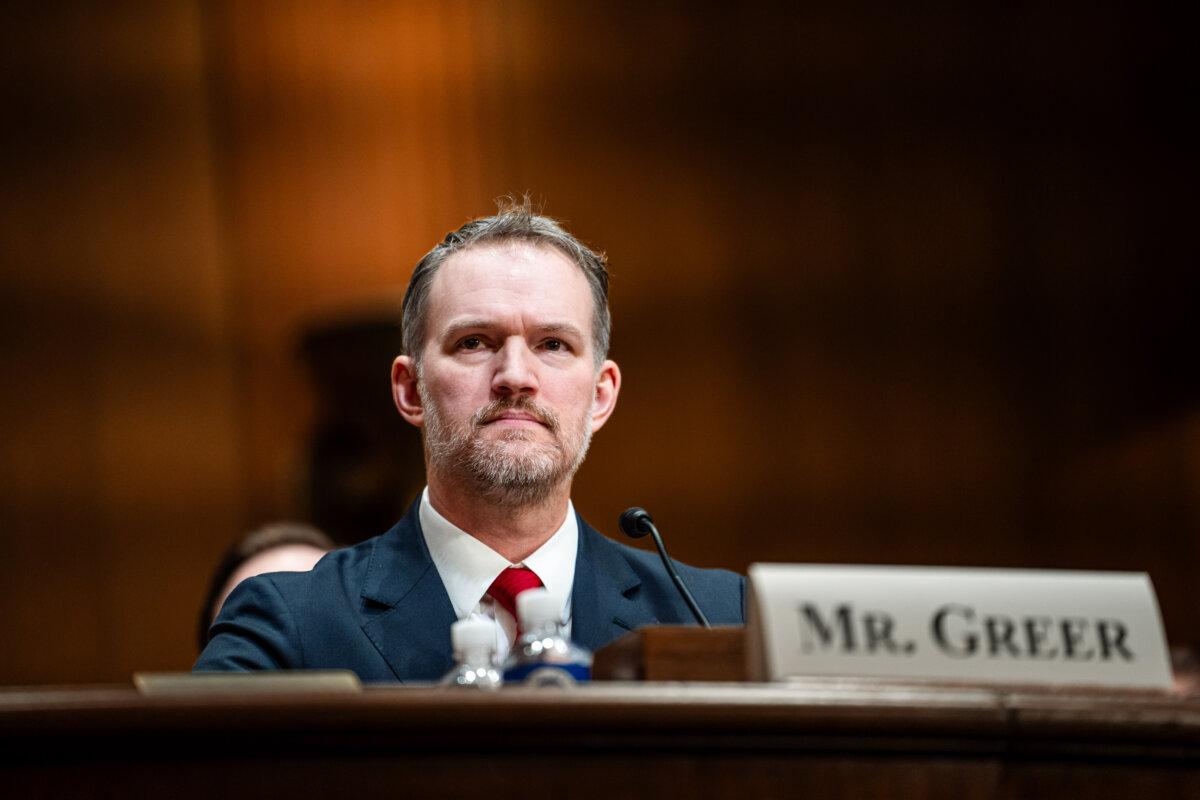‘It was a mistake for China to retaliate’ with more tariffs, White House press secretary Karoline Leavitt said.
President Donald Trump’s 104 percent tariffs on China and higher reciprocal levies on dozens of other nations went into effect at 12:01 a.m.
In February, Trump imposed a 10 percent tariff on Beijing over fentanyl. Weeks later, he doubled the import duty to 20 percent. During the long-awaited April 2 “Make America Wealthy Again” event, the president announced a 34 percent reciprocal tariff on all Chinese imports.
Altogether, the U.S. tariff rate on the Chinese regime stands at 104 percent.
Beijing announced it would retaliate with tit-for-tat tariffs and other punitive trade measures. After Trump’s threat, Chinese officials confirmed they would not back down.
“It was a mistake for China to retaliate to the president. When America is punched, he punches back harder,” White House press secretary Karoline Leavitt told reporters on April 8.
She added that Trump said if China reaches out to make a deal, “he’ll be incredibly gracious, but he’s going to do what’s best for the American people.”
The trade escalation will impact approximately $600 billion in annual U.S.-China trade, but officials say it is necessary to reduce the trade deficit.
Treasury Secretary Scott Bessent called China’s decision a “big mistake.”
The president initially established a tariff rate of 30 percent on packages worth less than $800, beginning on May 2. However, the new rate will be 90 percent, effective June 1.
Until this year, so-called de minimis packages had been exempt from tariffs, benefiting Chinese online retail giants Shein and Temu.
Higher Reciprocal Tariffs
Meanwhile, reciprocal tariffs on other nations ranging from 11 percent to 50 percent have also gone into effect.
Last week, the president unveiled a comprehensive list of nations—advanced economies and developing markets—now facing higher levies, a plan based on their non-monetary trade barriers, whether currency manipulation or industrial subsidies.
“For decades, our country has been looted, pillaged, and plundered by nations near and far, both friend and foe alike,” Trump said in his April 2 speech.
“Foreign leaders have stolen our jobs, foreign cheaters have ransacked our factories, and foreign scavengers have torn apart our once beautiful American dream.”
Dozens of nations have contacted the United States to embark upon trade negotiations ahead of the April 9 implementation, officials say.
Appearing before a Senate Finance Committee hearing on April 9, U.S. Trade Representative Jamieson Greer said to lawmakers that “nearly 50 countries have approached me personally to discuss the president’s new policy and explore how to achieve reciprocity.”
Bessent also told the Fox Business Network that as many as 70 countries have contacted the administration to pursue new trade agreements.

Nominee for the U.S. Trade Representative, Jamieson Greer, testifies before the Senate Committee on Finance on Capitol Hill in Washington on Feb. 6, 2025. Madalina Vasiliu/The Epoch Times
Kevin Hassett, the National Economic Council director, said in an interview with Fox News that managing a large number of requests for trade negotiations has been logistically challenging. While the White House prioritizes trade talks with other nations, Trump will first negotiate with Japan and South Korea, he noted.
“In the end, the president, of course, is going to be the one who decides whether the deal is good enough to change his mind about the tariffs,” Hassett said.
Recently, there has been uncertainty about whether the president will pursue trade talks.
White House trade advisor Peter Navarro, for example, recently declared that the tariffs are not a negotiation.
In a Truth Social post last week, Trump confirmed that To Lam, general secretary of the Communist Party of Vietnam, proposed cutting tariffs on U.S. goods to zero percent.
At the same time, the president thinks both can be true simultaneously: tariffs can be instituted, and negotiations can occur.
“We have many, many countries that are coming to negotiate deals with us,“ Trump told reporters alongside Israeli Prime Minister Benjamin Netanyahu at the Oval Office. ”They’re going to be fair deals, and in certain cases, they’re going to be paying substantial tariffs.”
Markets Brace for Tariff Effects
U.S. stock futures tumbled ahead of the new tariffs, with the leading benchmark averages down more than 1 percent.
The government bond market remained intact. The benchmark 10-year Treasury yield firmed above 4.3 percent, paring its sharp declines over the last several sessions.
Crude oil prices continued to decline fall, tumbling about 4 percent to below $58 per barrel in overnight trading on the New York Mercantile Exchange.
Without a framework to monitor current tariff-driven market conditions, stocks could remain highly volatile, says Larry Tentarelli, the chief technical strategist at Blue Chip Daily Trend Report.
“It is important to remember that this is a very fast moving and fluid news cycle. The tariff narrative could change at literally any time,” Tentarelli said in a note emailed to The Epoch Times.
Still, a blend of higher prices and lower growth—otherwise known as stagflation—is a major concern among investors, he added.
While tariffs are generating headlines, market watchers continue to monitor hard economic data.
Producer prices for March will also be published on April 11. Early estimates forecast a 0.2 percent jump, and core producer prices could rise 0.3 percent.
The Fed will publish minutes from last month’s Federal Open Market Committee (FOMC) policy meeting on April 9. The document summary will likely highlight officials’ consternation surrounding tariffs and their potential effects on the institution’s dual mandate of price stability and maximum employment.
“While tariffs are highly likely to generate at least a temporary rise in inflation, it’s also possible the effects will be more persistent,” Fed Chair Jerome Powell said at an April 4 conference of business journalists.
Original News Source Link – Epoch Times
Running For Office? Conservative Campaign Consulting – Election Day Strategies!


